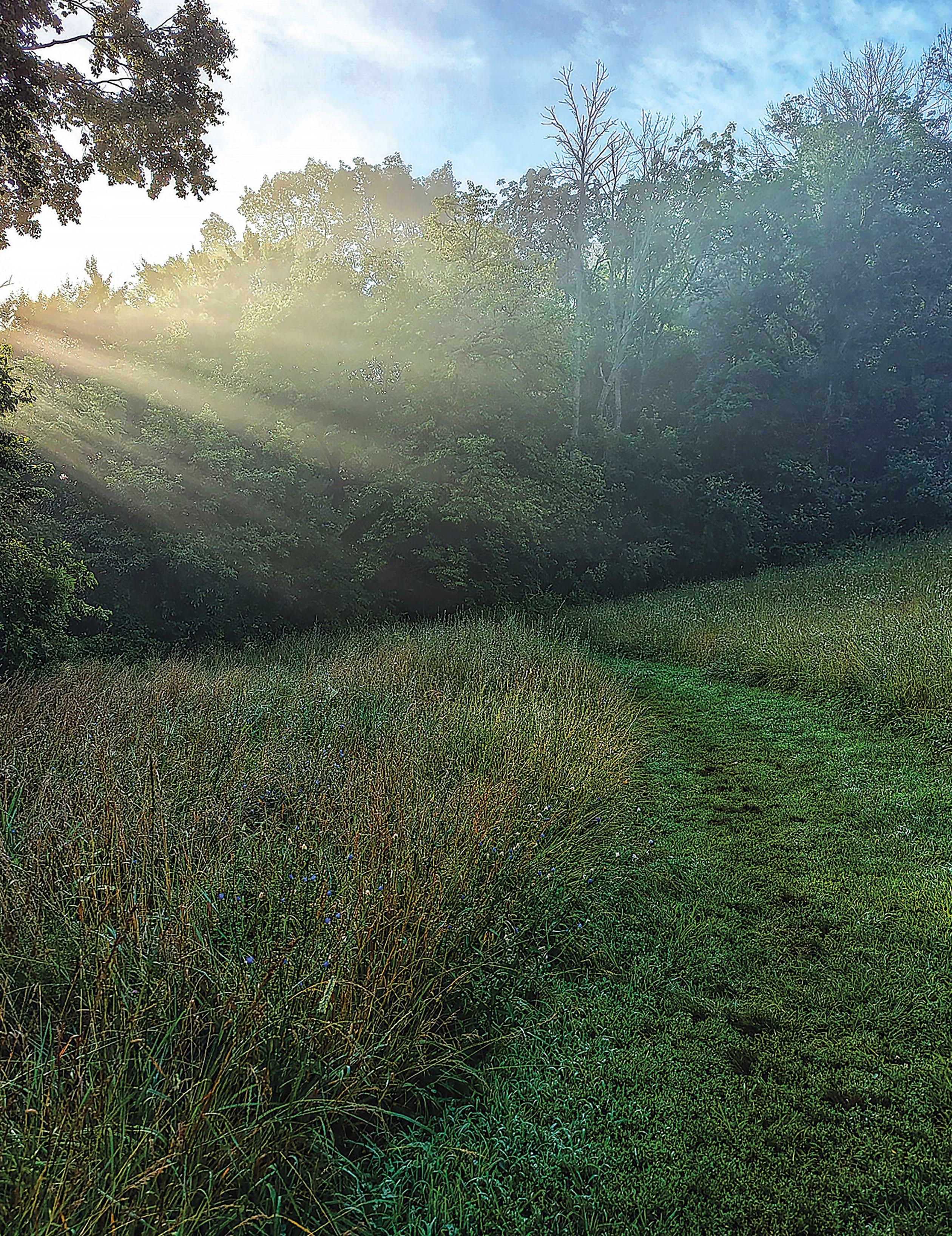

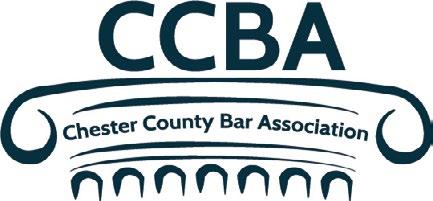




CCBA Officers
James D. Doyle, President
Curt Norcini, Vice President
Robert Burke, Treasurer
Maria Janoski, Secretary
New Matter Committee
Charles T. DeTulleo, Editor Emeritus
Maria Janoski, Editor
Rami Bishay
Mark Blank, Jr.
Jonathan R. Long
Shannon McDonald
Catelyn McDonough
John McKenna
Mary Wade Myers
Sara Planthaber
Karyn L. Seace
Scott Slomowitz
Virginia Swiatek
Bill Wilson
CCBA Staff
Greg Nardi Executive Director
Melissa Willson Communications, Events, and Marketing Manager
The Chester County Bar Association’s quarterly publication, New Matter, has been provided to Bar Association members for four decades.
A valuable aspect of CCBA’s membership, New Matter aims to provide our members with information pertaining to current issues facing the practice of law, historic legal issues, continuing legal education opportunities, Chester County Bar Association activities, programs, meetings, functions, practice tips, procedures for attorneys, and items of personal interest to our membership.
The opinions expressed in this material are for general information only and are not intended to provide specific legal or other advice or recommendations for any individuals. The placement of paid advertisements does not imply endorsement by the Chester County Bar Association.


If you have an idea for an article, or would like to submit content, please contact Greg Nardi at gnardi@chescobar.org or (610) 692-1889.
Spread the Word #NewMatterBar #HoffPubs

PUBLISHER: Hoffmann Publishing Group 2669 Shillington Road, Box #438, Sinking Spring, PA 19608 610.685.0914 x702 hoffmannpublishing.com
Graphic Designer: Jeni Rathman
FOR ADVERTISING INFORMATION & OPPORTUNITIES , contact Patricia Young at Pat@hoffmannpublishing.com or call 610.685.0914 x702.

James D. Doyle, Esquire President Chester County Bar Association
It is hard to believe we are already three-quarters of the way through the year. As I look back on the past several months, I continue to be impressed by the dedication and generosity of our members. It has been a true honor to serve as your President, and I am grateful to everyone who has helped make this such a productive and engaging year so far.
This spring and summer have offered several highlights that speak to the best of who we are as a legal community. In May, the Chester County Bar Foundation held its first-ever Golf & Pickleball Fundraiser, and the turnout exceeded expectations. Thanks to the hard work of our Foundation Board, staff, sponsors and participants, we raised over $50,000 to support legal education and access to justice programs across Chester County.
Law Day was another major highlight. This year’s theme—“The Constitution’s Promise: Out of Many, One”— was especially meaningful, and the day’s events reflected that. The Foundation awarded scholarships to local high school students pursuing careers in law and sponsored an art contest tied to the theme. At the ceremony, we also recognized several standout members of our legal community with awards, hosted an Admission Ceremony for newly licensed attorneys, and honored the winner of

the High School Mock Trial Competition. Thank you to everyone who helped bring this tradition to life again this year.
Our Law Student Internship and Development Program also got off to a strong start this summer with a kickoff breakfast that welcomed over 35 interns from across the County. The program gives students a real look into the practice of law, an opportunity to engage with our members and develop connections that will serve them for years to come. It continues to grow each year, and the mentorship it fosters is something we can all be proud of.
On the social side, our Golf League remains as popular as ever, with more than 40 members and a waitlist to join. From tee-times to post-round beverages, the league has become a valuable outlet for members to connect and unwind. And for those who prefer the water to the fairway, our annual Bar Sail in Kent Narrows was once again a hit.
Looking ahead, I hope you will join us for our annual Fall Bench Bar Conference, taking place September 18–20 at the Borgata Hotel & Casino in Atlantic City. The Bench Bar is always one of our most anticipated events, combining CLE
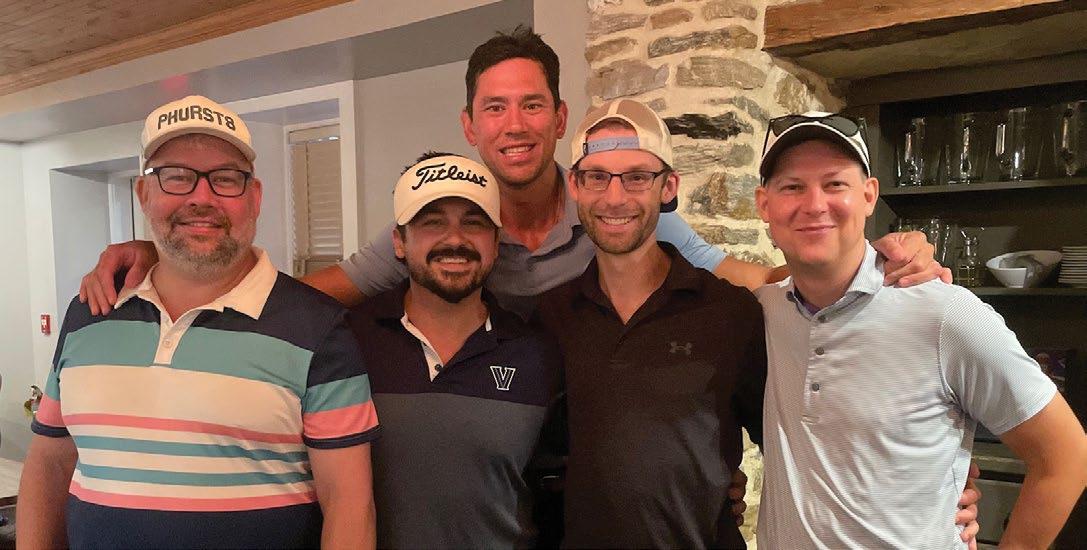
programming with opportunities to build relationships and enjoy some well-earned time away from the daily grind. Registration is open, and we would love to see you there.
Thank you again for the opportunity to serve as President this year. I look forward to connecting with many of you this fall as we close out what has already been a great year.
Warmest Regards,
James D. Doyle
President, Chester County Bar Association
STATEWIDE PENNSYLVANIA MATTERS NO CHARGE FOR INITIAL CONSULTATION
Representation, consultation and expert testimony in disciplinary matters and matters involving ethical issues, bar admissions and the Rules of Professional Conduct
• Judge, Court of Judicial Discipline
• Former Chairman, Judicial Conduct Board of Pennsylvania
• Former Chairman, Disciplinary Board of the Supreme Court of Pennsylvania
• Former Chairman, Continuing Legal Education Board of the Supreme Court of Pennsylvania
• Former Chairman, Supreme Court of Pennsylvania Interest on Lawyers Trust Account Board
• Former Federal Prosecutor
• Selected by his peers as one of the top 100 Super Lawyers in PA and the top 100 Super Lawyers in Philadelphia
• Named by his peers as Best Lawyers in America 2022 and 2015 Philadelphia “Lawyer of the Year” Ethics and Professional Responsibility Law and Legal Malpractice Law
1500 Market Street, East Tower, Suite 1800 • Philadelphia, PA 19102 (215) 751-2863


By CCBA Pro Bono Committee
On October 26, 2025, the Chester County Bar Association’s Pro Bono Committee will host the 21st annual Trial Run 5k, benefiting Legal Aid of Southeastern Pennsylvania (LASP). This muchanticipated autumn fundraiser has evolved into a cherished community tradition. Since its inaugural race in 2005, this spirited event has consistently combined fitness, fun, and fierce legal-community solidarity—in support of access to quality legal representation for Chester County.
The story of the Trial Run begins in early 2005, when Christine Zaccarelli, Esq., then a staff attorney at LASP and now, the CEO at The Crime Victims’ Center of Chester County, Inc., saw a lack of regularly occurring fundraising for LASP here in Chester County. She brought the idea for a 5k to the then-chair of the Chester County Bar Association Pro Bono Committee, John McKenna, Esq. The Honorable Anthony Verwey, then in private practice, was an original advocate for the race and, along with Chris, leaped (or walk jogged as he put it) to the challenge to co-chair the first Trial Run. They remained co-chairs of the Trial Run until 2016.
The two were instrumental in the birth and lasting impact of the Trial Run. When the Chester County Bar Association first partnered with LASP to launch a modest 5k walk/run, the mission of the Trial Run was twofold: raise funds and increase awareness. In less than five months, the first Trial Run 5k was established and held in June 2005. The first races required all hands on deck, including Chris and Judge Verwey’s spouses and children, who helped set up and facilitate each race. When asked about the process of establishing the first Trial Run, Judge Verwey said, “It was a lot like any movie with Mickey Rooney and Judy Garland, we just cleaned out the barn and put on a show, so to speak. Seriously, I know there are a lot of younger lawyers on their phone right now looking up that reference. In any event, we did not know a whole lot about putting together a 5k. We talked with someone with experience timing races and they provided guidance. Chris did yeoman’s work pulling it together and we had a great committee of people committed to making it all work. It was also a family affair. Chris’s husband John worked traffic control and my wife Kathy rode a bike at the back of the pack to make sure we didn’t lose any runners/ walkers along the way. Our children handed out cups of water to the runners. It was a community of people that made it all work.”

However, the effort and support it took each year did not stop with them. The Chester County Sheriff’s Office donated its time and services to provide security and safety for race participants for many years. Even when the Trial Run was still a smaller production, it took dozens of volunteers to make each race happen. Friends and fellow attorneys would direct traffic, sacrificing safety with near misses by cars.
Over the years, the event moved from June to October, becoming a fixture of the Bar Association’s #ProBono Week. Participation steadily rose, garnering sponsors from local law firms and businesses and becoming as wellknown for its colorful costumes (from Scooby-Doo to your new and improved Barbie collection). Its firm foundation in the community and philanthropic purpose ensured it remained a staple each year. The event preserves traditions from the first Trial Run with raffle prizes, podium awards for top finishers, and an enthusiastic costume competition. Participants relish the autumnal scenery of Wilson Farm Park and the camaraderie of peers committed to the cause. Importantly, proceeds go directly to supporting LASP, a 501(c)(3) nonprofit organization that provides legal representation, education, and advocacy to individuals and families struggling with poverty and injustice in Southeastern Pennsylvania.
Without the initial dedication of Chris, Judge Verwey, and their families, the support of Chester County Sheriff’s Office, and the lasting commitment of the Pro Bono Committee, the Trial Run would not be celebrating its 20th year.

From its early days to the present, the Trial Run’s growth mirrors its impact:
• 2005: The first Trail Run was held in West Chester Borough. Original sponsors included Gavin Law and MacElree Harvey.
• Late 2000s: The Honorable Katherine B.L. Platt’s son redesigned the logo of the t-shirt that is still used each year.
• 2012: Kristen Wetzel Ladd, Esq., joined the team and has been a pillar of the race committee, serving as co-chair since 2016.
• By 2015: The race fundraised more than $150,000.00.
• 2016: The race left the borough for Struble Trail in Downingtown.
• 2017: The race set a record high $20,100.00 in sponsorships.
• 2021: The race was moved from Struble Trail to Wilson Farm Park in Tredyffrin.
• 2022 and 2023: The race raised over $17,000 each year.
• 2024: Last year, $18,695 was raised.
• In the last seven years alone, the Trial Run has cumulatively raised over $119,000.00.
• To date, the Trial Run has raised approximately $270,000.00 for LASP.

Over the last two decades, the Trial Run has evolved into more than a race—it is a tangible demonstration of the Chester County legal community’s dedication to pro bono service and access to justice. The Chester County Bar Association’s Pro Bono Committee, alongside LASP’s staff and attorneys, view the race as emblematic of their shared mission. What began as a race Chris and Judge Verwey thought might have a good run of a few years has evolved into a pillar of legal aid fundraising, demonstrating that the efforts of a few individuals can grow into enduring vehicles for change. Each year, local law firms, Chester County businesses, and individual lawyers have generously supported the Trial Run, both financially and as volunteers. What Chris and Judge Verwey could not have known when they first began their mission to raise funds and increase awareness was the community they were building.
When asked to reflect on the growth and impact of the Trial Run, Chris Zaccarelli stated, “I honestly can’t believe it’s been 20 years! Those first few years, our families, LASP staff, and pro bono committee members were the main force behind the race. Very quickly, it grew into what it is today, an opportunity for Chester County’s legal community to come together and support a cause that is so important to so many. It is through the many who have stepped up, from volunteers, the Chester County Sheriff’s Department, LASP Staff, and to those who run and dress up year after year, that this event has continued for twenty years. I think the biggest impact the race has had is that it’s still going!”
The 21st annual Trial Run 5k will take place on Sunday, October 26, 2025, at 9 AM at Wilson Farm Park. Organizers are already seeking sponsors, runners, walkers, volunteers—and creative costume ideas. Sponsorship levels range from Patron to Event Sponsor, offering valuable marketing exposure and goodwill in return. The goal this year is to raise $20,000 for the 20th year.
As the Trial Run enters its second decade, its legacy remains clear: combining fitness, fun, and legal-aid advocacy to uphold LASP’s mission of providing quality legal representation to low-income and vulnerable people in Southeastern Pennsylvania. In every step, costume, and sponsor logo, the race underlines a powerful message: when a community runs together, justice wins together.
Founded in 2001 through the merger of four county-based programs, LASP serves Bucks, Chester, Delaware, and Montgomery counties, offering free legal help in areas like housing, benefits, veterans’ issues, and consumer law.
To learn more or register:
• Visit LASP's Trial Run 5k page: https://www.lasp.org/trial-run
• Contact Brian Doyle, LASP Staff Attorney & Pro Bono Coordinator: bdoyle@lasp.org, 484 416 4259 x5210.


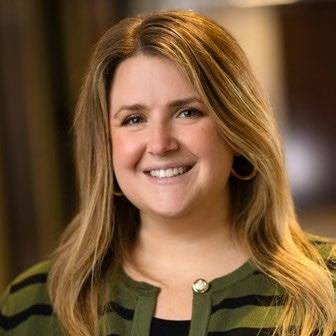


By Mark Blank, Jr., Esquire
Recently, while paging through the Chester County Bar Association 2025 Directory, I noticed that a fair number of our members graduated from Widener University’s Delaware Law School. I also learned from a reliable source that this month the Law School’s first graduating class will be celebrating its fiftieth anniversary.
So I decided to do some historical research, and this is what I found.
Alfred I. Avins, age 37, a law school professor hailing from New York City, decided to form a law school in Delaware, the latter of which had never had one. Some time in 1971, Dr. Avins boarded a southbound train at Penn Station, with $3000 in his pocket, and traveled to Wilmington, Delaware to commence with his endeavor. While on board the train, he met and befriended Dean Steele, a Delaware State Senator, who expressed some interest in Dr. Avins’ idea of a law school, and offered to be of assistance in the event that he could be.
With his meager bank account, Dr. Avins was able to deposit some security to rent a space to house an office and a classroom in the Wilmington YWCA; and to create and mail a catalog, which contained a description of the school, the curriculum to be, and an application for admission to the first class.
Some 180 students enrolled. Tuition was $1000 for the 1971-1972 academic year, with night classes only.
On the evening of October 6, 1971, Dean Avins introduced himself to the incoming class, welcomed everybody to the first session of The Delaware Law School, and distributed the case books, all as a part of the orientation. A journalist with Delaware Today stood by taking notes and photographs.
Besides the students, the school consisted of two faculty members lined up for the academic year, Dean Avins and Edgar Welsh. Mr. Welsh was a seventy-something retired professor and law librarian.
Dean Avins was a legal scholar. He received his bachelor’s degree from the City College of New York; his LL.B. from Columbia University Law School; a Juris Doctor from the University of Chicago; and a Ph.D. from University of Cambridge.
Classes commenced on the evening of October 11, 1971 on the second floor of the Wilmington, Delaware YWCA. For the first semester, Dean Avins taught Torts and Contracts, while Professor Welsh instructed a course entitled Legal Methods.
Besides Torts and Contracts, the second semester brought in three new classes: Legal Ethics; Family Law; and Agency and Partnerships. Dean Avins continued with Torts and Contracts, while Professor Welsh taught Legal Ethics. Family Law and Agency and Partnerships were headed by two adjuncts: William Taylor, Esquire, a Delaware public defender, taught the former, while Harry Hogan, Esquire, instructed the latter. Mr. Hogan was a D.C. lawyer who commuted to teach his class. The classes in the spring semester, 1972 were held in the Oddfellows Building in Wilmington.
In the fall of 1972, the first full-time class entered along with the first and second year evening classes. The second year evening
class, combined with the freshmen full-timers, constituted the Delaware Law School’s graduating class of 1975. Some full-time faculty were added.
The school purchased an abandoned church in Wilmington, where classes were held for the second year and for several years thereafter. Dean Avins built the school’s law library out of donations from government offices and law firms, as well as other miscellaneous sources. He obtained names and addresses of corporations (and their in-house counsel) from Moody’s Industrial Manual. Dean Avins’ thought was that the prospective donors would be incentivized by obtaining tax deductions.
Beginning in the fall of 1972, the academic year was based on the trimester system, which remained the method of the academic calendar until 1976, at which time the curriculum returned to semester based.
In every state and territory in the United States, in order to sit for the Bar, a candidate must be a graduate of an American Bar Association accredited law school or, if not the ABA, then approved by the Supreme Court of a state or territory. The Delaware Law School, for its first four years, had neither but, all the while, strived for ABA accreditation.
The first inspection by the ABA committee on accreditation was in March 1974. The second inspection was in July of the same year. Both times, provisional accreditation was denied.
Alfred Avins was an extremely conservative Constitutional and legal scholar. He espoused that the Civil Rights Act of 1964 was unconstitutional, notwithstanding that the United States Supreme Court had held otherwise.1 Previously, he had argued that the drafters of the Fourteenth Amendment did not intend to prohibit anti-miscegenation laws or school segregation. Thus, Loving v. Virginia2 and Brown v. Board of Education3 were, according to Avins, wrongly decided. Dr. Avins was opposed to the Warren Court’s Due Process Revolution and, in particular, Justices William O. Douglas and Hugo Black. His favorite Justices were the “Four Horsemen”: Justices Pierce Butler; James Clark McReynolds; George Sutherland; and Willis Van De Vanter. (They were opposed by the “Three Musketeers”: Justices Louis Brandeis; Benjamin Cardozo and Harlan Stone.) Writer’s Note: The Four Horsemen would have made the arch-conservative wing of the current Court seem like child’s play on amateur hour.
Dean Avins’ scholarly conservatism did not bode well with the American Bar Association which, traditionally, has leaned toward libertarianism. This fact appeared to have much to do with the law school’s failed attempts for ABA approval.4 In September 1974, Avins was forced to resign as dean. Professor Arthur Weeks was
1See: Heart of Atlanta Motel, Inc. v. United States, 379 U.S. 241 (1964).
2388 U.S. 1 (1967).
3347 U.S. 483 (1954).
4Other factors may have played in, but Avins’ presence did not help matters.
immediately appointed as Dr. Avins’ successor. John A. Tovey, assistant dean and professor of Torts, Taxation and Medical Malpractice since 1972, resigned. Dean Weeks had brought other law schools to ABA accreditation and was enthusiastic for the challenge. (Arthur Weeks was a southern gentleman, much in contrast to Dr. Avins.) Professor Avins, although no longer dean, remained on the Board of Trustees, at least for a time. And that did not help, to say the least.
Dr. Avins, still a professor at the law school and on the Board of Trustees notwithstanding, in early 1975 the school appeared to be in tip-top shape for a positive recommendation. Nevertheless, provisional accreditation was denied for a third time in March of 1975. Now, Widener College, which had its eyes focused on DLS for some time, stepped up to the plate and acquired the school. Meanwhile, Dr. Avins was ousted from the Board of Trustees. Although not specifically spelled out, it seemed as though these latter moves were what the accreditation committee was looking for and, in particular, affiliation with a college or university. Professor Weeks continued as dean. At the August, 1975 American Bar Association Annual Meeting, the house of delegates convened and voted 6-5, with one abstention (whew!), to grant provisional accreditation to The Delaware Law School of Widener College. The vote occurred on 6 August. The graduation ceremony for the class of 1975 was held at Widener College two weeks later. 267 graduates were awarded Juris Doctor degrees. Jon D. Fox delivered the commencement speech on behalf of the students.5 Edward Barrett, professor of Conflict of Laws, received the Distinguished Professor Award.
Honorable Collins J. Seitz, Chief Judge of the United States Court of Appeals for the Third Circuit, and a noted Delawarian, delivered the commencement address. Senator Steele was on the podium and spoke briefly. Also on the podium was Philadelphia Common Pleas Judge Fred I. DiBona, who contributed to the accreditation success, and whose son was among the Juris Doctor recipients. (Alfred Avins, although invited to participate, did not attend.)
In 1976, Widener College acquired Brandywine Junior College, which was located north of the city of Wilmington. This became the new campus for The Delaware Law School of Widener College.6
Alfred Avins started from scratch and ingeniously created and built a law school on his own, with very little assistance. He brought it into the world and developed it from infancy into adulthood, singlehandedly. Losing the law school was, to Dr. Avins, akin to not only losing an arm, but having it taken away from him involuntarily.
As Ringo Starr would say, “It don’t come easy.” Subsequently,
Continued on page 12
5Jon subsequently served in the Pennsylvania House of Representatives, the United States House of Representatives and the Montgomery County, Pennsylvania Board of Commissioners. Jon passed away in 2018.
6Widener College was awarded university status in 1979. Brandywine Junior College closed in 1991, after which the entire campus became Delaware Law School of Widener University. The old church building in Wilmington continued to be used for administrative offices until it was sold in 2008.
Continued from page 11
Dr. Avins spent close to the next ten years of his life bringing suit and engaging in litigation against various persons and entities. The defendants included (but were not necessarily limited to) Widener College (Widener University), Delaware Law School, The Delaware Law School of Widener College, Arthur Weeks (as dean of The Delaware Law School), Dr. Clarence R. Moll, president of Widener College, F. Eugene Dixon, Jr., trustee of Widener College, John B. Hannum, United States District Judge (and father of our own Jock Hannum). See: Avins v. Widener College, Inc., 421 F. Supp. 858 (D. Del. 1976); Plechner and Avins v. Widener College, Inc., 418 F. Supp. 1282 (E.D. Pa. 1976), aff'd 569 F.2d 1250 (3d Cir. 1977); Avins v. White, 627 F.2d 637 (3d Cir. 1980), cert. denied, 449 U.S. 982 (1980)7; Avins v. Hannum, 497 F. Supp. 930 (E.D. Pa. 1980).
The lawsuits came to a head in Avins v. Moll, Dixon, et. al., 610 F. Supp. 308 (E.D.Pa.1984). Reading the opinion, it appears that District Judge Edward Cahn put the Avins serial litigation to rest, at least in regards to The Delaware Law School, its affliates and its progeny.8
Dr. Avins attempted to form two more law schools, both of which failed shortly after their inceptions and, you guessed it, more litigation: Avins and Northern Virginia Law School v. Joan S. Jones, et. al. 883 F.2d 69 (4th Cir. 1989).9
Alfred Avins was known to be abrasive and, unquestionably, he


“Looking
was eccentric and litigious; however, in all due respect, he was a genius, a workaholic, ambitious, and had brass nuts. Say what you want to say, but without him, there would not be a class of 1975 or, for that matter, classes of 1976 through 2025 as well. It was his blood, sweat equity and tears that built a law school from scratch which enabled graduates for the last fifty years. The alumni association recognized this by creating a library in his name: The Alfred Avins Memorial Library, which is housed in a room in the current Delaware Law School Library.
Yes, Dr. Alfred I. Avins was a one-man band, who formed, built and developed The Delaware Law School. He was the quarterback who carried the ball to the one-yard line, but departed the game due to injury. The successor quarterback did a brotherly shove and scored the winning touchdown, which saved the game from a loss.
Alfred Avins passed away in 1999. He is gone, but not forgotten; and his legacy, The Delaware Law School, lives on.
7Defendant James P. White was chairman of the ABA law school accreditation committee. The suit was in the nature of defamation. In the District Court, Dr. Avins prevailed, however, suffered a reversal on appeal.
8Litigation was not a novelty to Dr. Avins. See: Alfred Avins v. Rutgers, the State University of New Jersey, 385 F.2d 151 (3d Cir. 1968), cert. denied (1968). The basis for Avins’ lawsuit in District Court was that The Rutgers Law Review’s editorial board refused to publish an article that Dr. Avins submitted for publication concerning the Civil Rights Act of 1875 and rejecting the Supreme Court’s ruling and logic as stated in Brown v. Board of Education. Dr. Avins argued, among other things, that the rejection by Rutgers was unconstitutional state action.
9The identical lawsuit had already traversed the Virginia state trial and appellate courts. Thus, in Northern Virgina, res judicata and/or collateral estoppel were in the mix.

Steve Lagoy, Esquire
• Pepperdine Law –Dispute Resolution Diplomate
• Martindale Hubbell AV-rated – 25 years
• Pennsylvania Super Lawyer (ADR) – 14 years



Raised just over $83k!
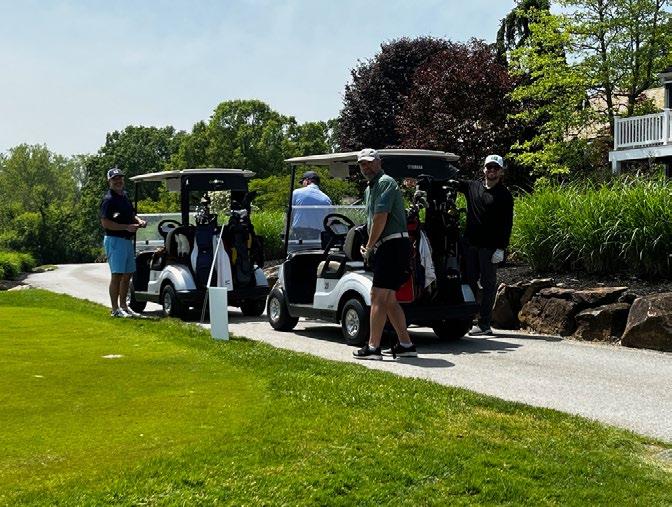



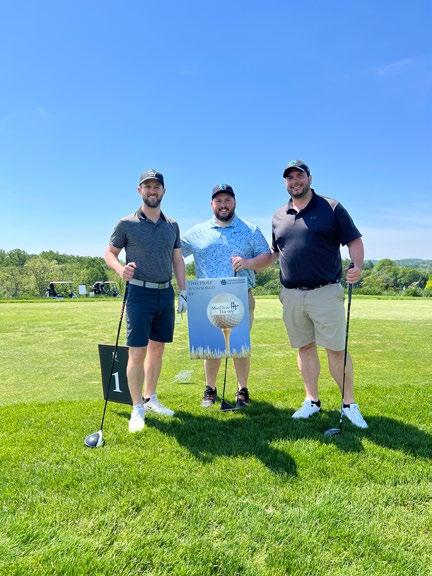



Thank you to everyone who came out to support the foundation and its mission!






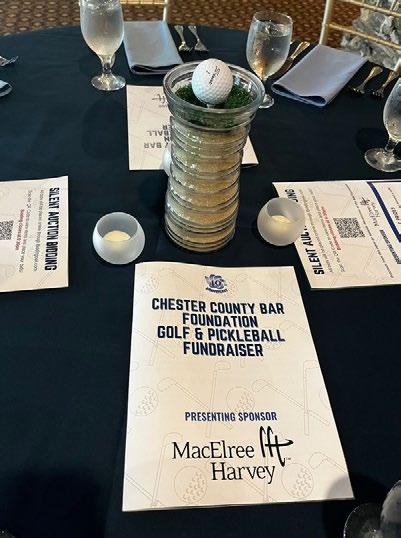



ABy Greg Nardi CCBA Executive Director
s we move toward October and National Pro Bono Week (and perhaps the start of another Phillies championship run!), I’m reminded that leadership in the legal profession takes many forms. Some serve through the courtroom or the firm, others in classrooms or boardrooms—but some of the most impactful leadership happens quietly, as attorneys offer their time and talent to neighbors who need legal help but cannot afford it.
At the Chester County Bar Association, I am humbled when I see so many servant leaders in action in our community modeling the idea that pro bono service is not only a professional responsibility—it is a form of servant leadership. It is how many of our members choose to give back, to mentor, and to show what it means to lead by example.
Each year, we shine a spotlight on this spirit of service through our Access to Justice Program, which connects volunteer attorneys with individuals and families who earn too much to qualify for free legal aid but cannot afford private counsel. This award-winning program fills a critical gap in our community and helps ensure that justice is not reserved only for those who can pay for it. Volunteer attorneys who would like to take on a case through the Access to Justice Program are encouraged to contact the CCBA office—we are always happy to welcome more hands to this important work.
During Pro Bono Week, at the end of October, our CCBA leadership and the Judges from our community recognize the service of our members at our annual Pro Bono Reception. This event recognizes ALL Pro Bono service In September, the CCBA staff will send a request to the membership to please report any Pro Bono service over the past year. We hope that all members will let us know about the service they are doing all over the community so that we might be able to say ‘Thank You’ at this recognition event.
None of this work would be possible without leadership behind the scenes. I want to thank Cathie Voit and Christin Kubacke, the co-chairs of our Pro Bono Committee, for their unwavering commitment. Their dedication to expanding access to services, to recruiting attorneys, to educating volunteers, and providing much needed guidance to the CCBA staff are just some examples of their servant leadership. I also want to recognize Lauren Shea, rock star member of the CCBA staff, who manages the intake and coordination of these cases with great care and compassion. Their efforts, along with the contributions of many volunteer attorneys, are transforming lives every day.
We are also proud of our long-standing partnership with Legal Aid of Southeastern Pennsylvania (LASP). Rachel Houseman (LASP Managing Attorney for Chester County), Deborah Steeves, Brian Doyle, and Kelly Young spearhead the Chester County arm of this great team. We know so many of our members assist with Pro Bono clients as part of LASP assistance programs. In addition to this service and providing annual grants from the Chester County Bar Foundation to support LASP’s mission, several of our members—Bill Gallagher, Christin Kubacke (Board Secretary), John McKenna, Cathie Voit (LASP Immediate Past President), and myself—serve on LASP’s Board of Directors, helping guide its work across the region. Volunteer attorneys who would like to take on a case through LASP are encouraged to contact the LASP office in West Chester.
And speaking of lending a hand, I’m excited to share that this year marks the 20th Annual “Trial Run” 5k, to be held on Sunday, October 26, 2025, at Wilson Farm Park. This beloved event, started two decades ago by Judge Anthony Verwey and Christine Zaccarelli, brings together members of the legal community and the public in a fun, healthy way—all while supporting LASP. Every dollar raised goes directly to helping LASP provide legal assistance to lowincome residents of Chester County and beyond. Please see the Trial Run article in this issue written by Asha Steele for a great look at the history and importance of this event.
Whether you run, walk, volunteer, or cheer from the sidelines, the Trial Run is a chance to show up for justice— together.
As we celebrate Pro Bono Week this fall, I encourage each of you to reflect on how you define leadership. Is it in your title? Your years of practice? Or could it be something simpler—your willingness to stand up for someone else, to mentor a colleague, to serve quietly and consistently?
At CCBA, our members know the answer and show it in their actions. Leadership is service. And service is how we lead.
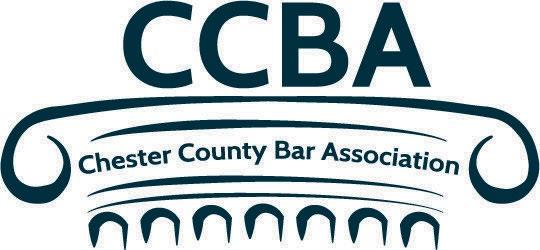

This summer, law student interns from across Chester County—including those at the District Attorney’s Office, the Public Defender’s Office, and Legal Aid—had the opportunity to attend a variety of programs and events designed to provide practical legal experience and support professional development.
Weekly events included (but were not limited to) a welcome breakfast, lunch with Superior Court Judge Sullivan, lunch with the Chester County Row Officers, lunch with U.S. Eastern District Judge Sánchez, and a farewell happy hour.
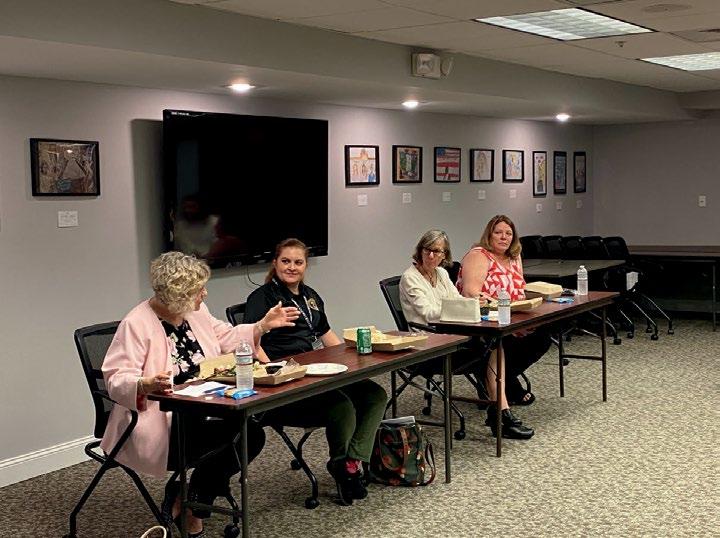

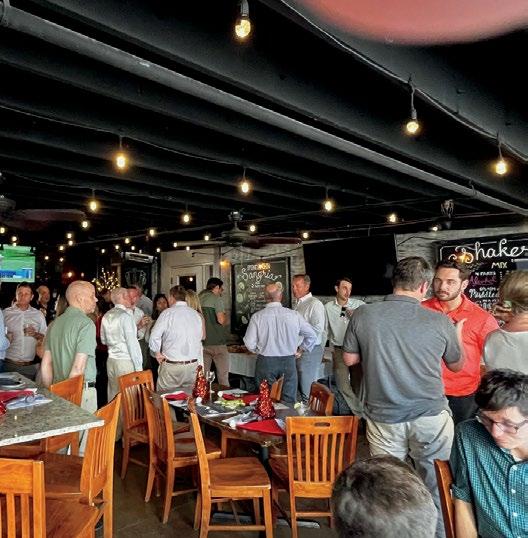
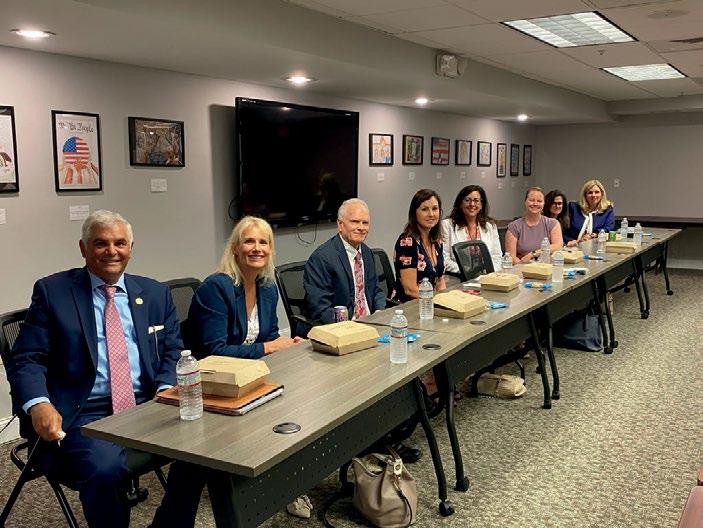

The goal of the CCBA’s Law Student Internship & Development Program is for participants to gain practical legal experience and exposure to the legal community in Chester County.
To learn more about the program visit www.chescobar.org




BARLEY SNYDER attorney MARTIN SIEGEL has been reappointed to the Pennsylvania Department of Environmental Protection’s (PA DEP) Sewage Advisory Committee for a third consecutive term.
BARLEY SNYDER is pleased to announce that attorney ALICE SOLOMON has joined the firm in its Malvern Office. She is the newest member of Barley Synder’s Real Estate and Litigation practice groups.
MACELREE HARVEY welcomed attorney ELIAS KOHN as an Associate in the Business Department.
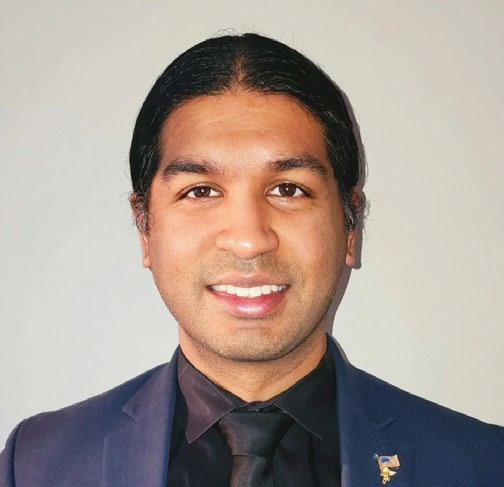
PERNA & ABRACHT LLC recently welcomed former Philadelphia and Chester County prosecutor JOSHUA P. PARAMBATH as an Associate Attorney.
GAWTHROP GREENWOOD, PC is pleased to announce that family law attorney DONALD F. KOHLER has joined the firm as a partner.
September: 18-20 Fall Bench Bar Conference at the Borgata
October: 6-10 Membership Appreciation Week 30 Pro Bono Awards and Reception
Municipal Law and Litigation
Attorney THEODORE T. SPEEDY, JR. has joined GAWTHROP GREENWOOD, PC effective May 12, 2025.
November: 6 YLD Quizzo Fundraiser
Naturalization Ceremony
Veterans Appreciation Luncheon 13 Key Fellows Reception and Community Grant Awards


CCBA aged 40 or younger. For more information or to get involved, email Lauren Shea at LShea@chescobar.org
The Young Lawyers’ Division is open to those members of the
Keep an eye out for an email with details about semi-finals and finals for Mock Trial!
YLD Happy Hour April 17th, 5-7 PM
YLD Meeting March 13th @ 12 PM
The YLD hosted the second annual YLD v. ELD kickball classic in September!
1. This YLD lawyer has been to Las Vegas six times.
2. This YLD lawyer played rugby in college and for a national club team.
3. This YLD lawyer has twelve siblings.
4. This YLD lawyer plays the bagpipes.
5. This YLD lawyer used to operate a Zamboni.
The Annual Quizzo fundraiser raised a record $5,750 to benefit Safe Harbor of Chester County!
6. This YLD lawyer has raced motorcycles up and down the East Coast.
The Annual Quizzo fundraiser raised a record $5,750 to benefit Safe Harbor of Chester County!
7. This YLD lawyer once scored a touchdown in the endzone at the Linc.
BAR SAIL YLD BOAT
8. This YLD lawyer won his 8 grade talent show with a dance rendition to “Ain’t No Mountain High Enough.” th 9. This YLD lawyer has a dog named Dolly Parton.
10. This YLD lawyer can play the banjo.
The YLD had a successful 2024, hosting more than 10 meetings and events, and adding 77 new YLD-eligible members to the group.

The YLD had a successful 2024, hosting more than 10 meetings and events, and adding 77 new YLD-eligible members to the group. The Young Lawyers’ Division is open to those members of the CCBA aged 40 or younger. For more information or to get involved, email Lauren Shea at LShea@chescobar.org
Oh, The Places You’ll Go February 20th, 5-7 PM
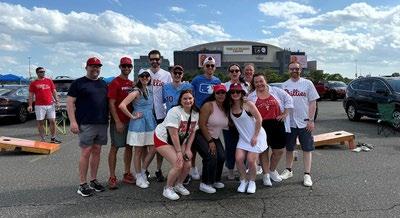
CHAIR
Lauren A. Nehra, Esq. Unruh Turner Burke & Frees

MacMain Leinhauser
Ryan M. Jennings, Esq. Unruh Turner Burke & Frees

CHAIR-ELECT

Maeve E. Bain, Esq.
TREASURER
SECRETARY/
SECRETARY/ TREASURER
Maeve E. Bain, Esq. MacMain Leinhauser


Asha I. Steele, Esq. Unruh Turner Burke & Frees

Unruh Turner Burke & Frees

IMMEDIATE PAST CHAIR
Ryan M. Jennings, Esq. Unruh Turner Burke & Frees
Lauren A. Nehra, Esq.
CHAIR
The YLD hosted the second annual YLD v. ELD kickball classic in September! SAVE THE DATE!
S:ANSWER 1. obR ersonJeff opwthr(Ga ood);weenGr 2. Chris yDe (Fleck ertckE Klein McGarry); 3. Mac yMurph ,y(Buckle Brion, eMcguir & Morris); 4. Jamison MacMain ee(MacElr y);eHarv 5. aceGr Mannix (District y'sornettA Office); 6. Michael asHilleg (Assistant Public ender);Def 7. yemJer enskyvGri opwthr(Ga ood);weenGr 8. Dan aerLeP (Unruh urnerT eBruk & ees);rF 9. evMae Bain (MacMain Leinhauser);10. antGr Bloomdahl (Bloomdahl & on,Wint C)PLL
Oh, The Places You’ll Go February 20th, 5-7 PM
YLD Meeting March 13th @ 12 PM
YLD Happy Hour April 17th, 5-7 PM
Keep an eye out for an email with details about semi-finals and finals for Mock Trial!
How Hard is the “Hard Look” after Seven County Coalition? SCOTUS Clarifies How Far “Upstream” and “Downstream” Federal Agencies Must Study under NEPA


IBy John R. Embick, Esquire John R. Embick, PLLC Chair of the CCBA Environmental Law Section
n Seven County Infrastructure Coalition, et al. v. Eagle County, Colorado, et al. No. 23-975 (Decided 5/29/2025)(“Seven County Coalition”), the U.S. Supreme Court issued an important ruling which interprets the National Environmental Policy Act (“NEPA”), 42 U.S.C. §§4321 et seq. The Seven County decision was an 8 to 0 decision, with Justice Gorsuch recusing himself. The opinion was written by Justice Kavanaugh, and a concurring opinion was written by Justice Sotomayor.
NEPA was enacted in 1969, during an intense period of environmental legislation (e.g., Clean Air Act (1970); Creation of USEPA (1970, by Executive Order); Occupational Safety and Health Act (1970); Federal Water Pollution Control Amendments (1972); Federal Insecticide, Fungicide and Rodenticide Act (1972); Endangered Species Act (1973); Safe Drinking Water Act (1974), etc.). One of the main purposes of NEPA was to require federal agencies to study the environmental
consequences of proposed federal action before taking action.
NEPA sets forth a “Declaration of National Environmental Policy,” which mandates that federal agencies use all practicable means to create and maintain conditions under which man and nature can exist in productive harmony. Section 102 of NEPA requires federal agencies to assess environmental consequences (and benefits) in their planning and decision-making through a systematic and interdisciplinary approach. Under NEPA, all federal agencies are required to prepare detailed studies which assess the environmental impact of major federal actions that are expected to significantly affect the environment. Under the NEPA review process, federal agencies must also evaluate various alternatives to the proposed actions, including the “do nothing” or “no action” alternative. These evaluations are commonly referred to as Environmental Impact Statements (“EISs”).
One of the most famous early cases which interpreted NEPA was Calvert Cliffs’ Coordinating Committee v. Atomic Energy Commission, 449 F. 2d 1109 (D.C. Cir. 1971, cert. denied, 404 U.S. 942 (1972). In Calvert Cliffs, the Baltimore Gas and Electric Company (“BG&E”) had purchased property in Calvert County, MD, and submitted applications to construct a nuclear power plant. The AEC issued a license for the plant before the

passage of NEPA, and various groups appealed. During the appeal process, NEPA was enacted, and the AEC revised its rules to comply with the new NEPA mandate, but ultimately issued a license to BG&E. The revised AEC NEPA rules also were appealed. In Calvert Cliffs, the D.C. Circuit Court held that environmental protection is a part of the mandate of every federal agency or department, and that NEPA required a detailed statement of environmental consequences of federal action. The court remanded the matter to the agency for preparation of a compliant EIS. Ultimately, the AEC produced an adequate EIS, and issued a license. A nuclear plant was constructed, began operations in 1975, and is in operation today, 50 years later.
Another important NEPA decision was set forth in Robertson v. Methow Valley Citizens, 490 U.S. 332 (1989). In an opinion by Justice Stevens, a unanimous Court held that while NEPA and the NEPA regulations developed by the Council on Environmental Quality (“CEQ”) required agencies to take a “hard look” at the environmental consequences of their proposed actions, NEPA did not require a particular decision because NEPA did not impose substantive duties mandating a particular result. In Robertson, a case that involved a proposed ski resort in Washington State, the Court also held that while mitigation efforts had to be considered in an EIS, NEPA did not mandate adoption of any mitigation measures.
In Seven County Coalition, the Court again was asked to review the scope of NEPA requirements, and it has been almost twenty years since the last important SCOTUS decision regarding NEPA. The background of Seven County Coalition is that a group of municipalities wanted the U.S. Surface Transportation Board (“STB”) to approve construction of an eighty-eight-mile railroad to connect the Uinta Basin to the national railroad network. The railway line would facilitate the transportation of crude oil to refineries along the “Gulf of America” coast. The STB prepared an extensive EIS, and approved the construction of the railroad extension. An appeal resulted, and the D.C. Circuit Court of Appeals reversed the STB approval because the EIS did not adequately consider the environmental effects of petroleum extraction and refining both “upstream” (e.g., increased development in the Uinta Basin) and “downstream” (e.g., increased emissions from refining operations in the Gulf Coast area).
The Seven County Coalition decision reversed the lower court decision, with Justice Kavanaugh writing that the STB was not required to consider the environmental impacts of upstream or downstream unrelated projects or
developments. The Court also strongly emphasized that federal agencies were to be afforded substantial deference (compare the recent SCOTUS decision in Loper Bright Enterprises v. Raimondo, 603 U.S. 369 (2024), which overturned the Chevron Doctrine) in preparing EISs, and that agencies were required to focus only on the direct impacts of proposed actions.
Justice Kavanaugh wrote:
Simply stated, NEPA is a procedural cross-check, not a substantive roadblock. The goal of the law is to inform agency decisionmaking, not to paralyze it.
Slip Op. at 2.
Regarding the level of judicial deference to be according to agency decision making under NEPA, Justice Kavanaugh also held:
Since the early 1970s, federal courts have reviewed NEPA cases. Over time, some courts have assumed an aggressive role in policing agency compliance with NEPA. Other courts have adopted a more restrained approach. In light of the continuing confusion and disagreement in the Courts of Appeals over how to handle NEPA cases, we think it important to reiterate and clarify the fundamental principles of judicial review applicable in those cases. As we will explain, the central principle of judicial review in NEPA cases is deference.
As a general matter, when an agency interprets a statute, judicial review of the agency’s interpretation is de novo.
See Loper Bright Enterprises v. Raimondo, 603 U. S. 369, 391–392 (2024). But when an agency exercises discretion granted by a statute, judicial review is typically conducted under the Administrative Procedure Act’s deferential arbitrary-and-capricious standard. Under that standard, a court asks not whether it agrees with the agency decision, but rather only whether the agency action was reasonable and reasonably explained.
Slip Op. at 8-9 (citations omitted).
So, although the Seven County Coalition decision focuses on infrastructure projects, the holding will likely streamline the EIS process, and reduce the range of impacts that must be evaluated. However, it is abundantly clear (at least to me) that projects like the Uinta Basin railway undeniably will have “upstream” and “downstream” environmental impacts. However, the holding suggests that the analysis of such impacts is too remote and speculative, and the agencies do not have to study them.
By Christine Zaccarelli, Chief Executive Officer, CVC
The Crime Victims’ Center of Chester County, Inc. (CVC) is happy to announce that tickets are now on sale for their Second Annual Cheers to CVC: Battle of the Badges on September 25th from 5:00 – 8:00 pm at BELFOR Property Restoration in Exton. The highlight of the evening will be the Battle of the Badges Fire and Police Chief Bartending Competition
Last year’s winner, Police Chief Lou Marcelli of Malvern Borough, will be joined behind the bar by Police Chief’s Michael Carroll of West Goshen Township, CVC Board Member Josh Lee of West Chester Borough, Brian Marshall of Phoenixville, Sam Iacona of Oxford and Lee Benson of West Whiteland. New to this year’s competition, Fire Chief’s John Sly of the Chester County Fire Chiefs Association, Eamon Brazunas of Phoenixville, Evan Taylor of Valley Forge, Erik Felker of West Grove, Mike Holmes of Lionville and Gerry DiNunzio of Goodwill will also be behind the bar. They will all be showcasing their bartending skills and competing to raise the most tips, all in support of the vital services provided by CVC. The competition will be fierce and all in good fun.

resources to survivors of violence and sexual assault, but also reinforces our shared promise to stand with them in their journey toward healing and justice.”
CVC wants to especially thank CVC Board Members Beau Crowding and Justin DiMedio for all they are doing to make this

Chief Marcelli is eaglery awaiting the chance to defend his title; he said “I need your help! I’ll be back behind the bar this year to defend my trophy and championship. I hope to increase the victory this year with your generous tips.” He also shared that “I may have walked away with the victory trophy, but The Crime Victims’ Center of Chester County, Inc is the true winner.” He is hopeful the Malvern faithful will help keep the trophy with him! All proceeds from the event will go towards the programs and services provided by CVC, including counseling, advocacy, and education. The funds raised will help CVC continue to offer these essential services at no cost to victims, family members, and the community.
CVC Board President Cherie Arabia shared, “We are incredibly thankful to all who support The Crime Victims’ Center of Chester County, Inc. Your commitment not only helps provide vital
a great night and their 2025 Community Partner Goldberg, Goldberg, & Maloney and our Chief Sponsor Malvern Mayor Zeyn Uzman for their support of this event!
To purchase tickets for the event, support your favorite Chief or for more information about The Crime Victims’ Center of Chester County, Inc. please visit https://www.cvcofcc.org/.
The Crime Victims’ Center of Chester County, Inc. (CVC) fosters healing, hope, and empowerment through free, confidential, and compassionate support for victims of sexual violence and other crimes. We guide individuals through trauma, recovery and legal processes. We work to prevent violence by promoting community inclusivity, raising awareness and imparting essential skills through outreach and education throughout Chester County.


is proud to recognize Joseph A. Bellinghieri Jr., Esq., of MacElree Harvey with the 2025 Door Opener Award—an honor given to professional advisors who meaningfully introduce clients to the power of legacy philanthropy.
As Partner of MacElree Harvey’s Trust & Estates, Tax, and Corporate Law Office, Bellinghieri played a pivotal role in guiding his long-term client, the late Sue Barber, through the creation of a charitable legacy in memory of her and her son, Barry Barber. Sue had previously established a Special Needs Trust (SNT) to ensure lifelong care for Barry, who had special needs. Yet, she was unsure how to structure a charitable component that would come into effect after Barry’s passing.

Recognizing both the complexity and sensitivity of her wishes, Bellinghieri referred Sue to the Chester County Community Foundation (CCCF)—a partner he trusted to help steward such legacy gifts with care and accountability.
Bellinghieri, Sue, and the Foundation worked together to create a philanthropic Special Needs Trust including a charitable remainder provision: after the passing of her son Barry, the remainder of the trust passes to a designated charitable entity — in this case, the Chester County Community Foundation, to award grants in perpetuity, to charitable causes of interest to the Barber family and continuing the Barber family’s legacy beyond their lifetime. Sue established the CCCF Barber Family Legacy Fund for Chester County, which supports underprivileged children, at-risk youth, and individuals with special needs throughout the region.
“Helping clients make a difference beyond their lifetime is one of the most rewarding aspects of estate law,” Bellinghieri shared. “With its deep roots and community-centered approach, the Foundation is an ideal partner for legacy-minded clients.”
This collaboration highlights the essential role estate attorneys play in charitable planning. While accountants and financial advisors bring critical financial insight, it is often the estate planning attorney who helps clients define and structure their philanthropic intentions with clarity and legal precision.
For estate attorneys seeking to provide clients with a path to lasting impact, the Chester County Community Foundation offers expertise, flexibility, and a deep understanding of local philanthropic needs— ensuring gifts are both meaningful and enduring.
To honor Joseph A. Bellinghieri Jr., Esq., and learn more about partnering with the Foundation, please join us at the 31st Annual Meeting & Legacy Celebration on Monday, October 27, 2025, at Uptown! Knauer Theatre in West Chester. A networking reception begins at 4:00 PM, followed by the annual meeting at 5:00 PM. RSVP at ChesCoCF.org or call 610.696.8211.
Chester County Community Foundation
28 W. Market St., The Lincoln Building West Chester, PA 19382 www.chescocf.org | 610.696.8211
Zeb Davenport, Ed.D., Chair of the Board
Karen Simmons, President/CEO
Jason Arbacheski, CAP®, Gift Planning & Stewardship Director










This year’s theme was “The Constitution’s Promise: Out of Many, One.”
One Friday, May 2 members of the Bar Association and the community came together at the Chester County Justice Center to celebrate Law Day. A heartfelt thank you goes out to the leaders and volunteers who helped make the day such a memorable one!
This year we celebrated the winners of the Art Poster Contest whose artwork is now on display in the lower level of the Chester County Bar Association.
Special recognition goes to the scholarship recipients Julieta Bedolla-Villagomez, winner of the Hon. Charles B. Smith Scholarship, and Grace Janczak, winner of the Charles E. Swope Scholarship.
This year’s Law Day Awards were presented to:
• Community Service Award – John Rafferty, Esquire
• Volunteer Service Award – Cheryl Cristino
• Justice Center Employee of the Year –Kimberly Bainbridge.
Attorney Rosana Chiple, Chair of the Naturalization Committee, received a citation from Representative Chris Pielli, recognizing her years of dedication to organizing the naturalization ceremonies.
Finally, congratulations to B. Reed Henderson High School’s Mock Trial Team for winning the Chester County Mock Trial Competition!



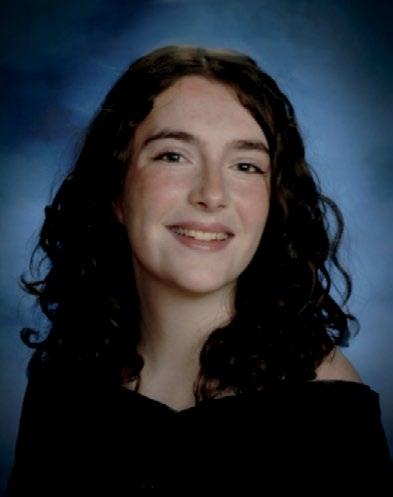

Advocacy Aces

Choudhary Grade 4

Advocacy Aces

Legal Legends

Keira Kearns Grade 7
Legal Legends

Legal Legends

Senior Solicitors
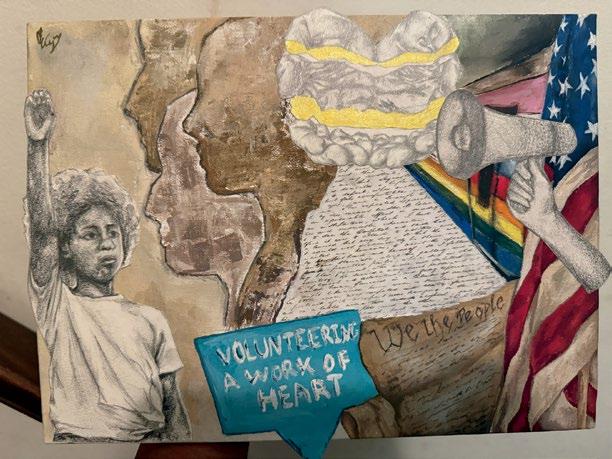
Farhana Amedu Grade 11

11
Senior Solicitors

Grade 9
Originally submitted by Edmund Nyarko, Law Clerk, Hon. Juan R. Sánchez
On April 4, the judges of the Eastern District of Pennsylvania (EDPA) joined the court’s historical society to celebrate the unveiling of the portrait of Juan R. Sánchez in the Ceremonial Courtroom of the United States Courthouse in Philadelphia. In recognition of Judge Sánchez’s remarkable journey from Vega Baja, Puerto Rico, to becoming the first Latino Chief Judge of the EDPA, roughly 300 family, friends, colleagues, and distinguished members of the judiciary filled the room to mark the momentous occasion.
Chief Judge Mitchell S. Goldberg opened the ceremony by praising Judge Sánchez’s dedication to public service and highlighting his integrity. President of the EDPA Historical Society Thomas J. Elliott emphasized the judge’s leadership during the COVID-19 pandemic, crediting his tireless work ethic guiding the court through unprecedented challenges.
Pennsylvania Superior Court Judge Paula Ott, a former colleague, reflected on their time together in Chester County and recounted Sánchez’s dedication to judicial

innovation and public education. Attorney Diana Cortes speaking for Judge Sánchez’s former law clerks, shared personal insights into his mentorship—emphasizing his high standards and respect for others. And longtime friend, attorney Jim McErlane, underscored Judge Sánchez’s thoroughness and determination to succeed.
In his remarks, Judge Sánchez expressed deep gratitude to his family, colleagues, and mentors, reflecting on a career defined by perseverance and public service.


WHERE DO YOU LIVE?
Malvern, PA.
WHAT WAS YOUR FIRST JOB? A referee.
WHAT WORD BEST DESCRIBES YOU?
Friendly (most of the time).
WHERE WOULD WE FIND YOU ON A SATURDAY AFTERNOON?
At a soccer game or cuddling with my dog Iris.
WHAT IS YOUR FAVORITE WAY TO SPEND YOUR FREE TIME?
Reading or baking.

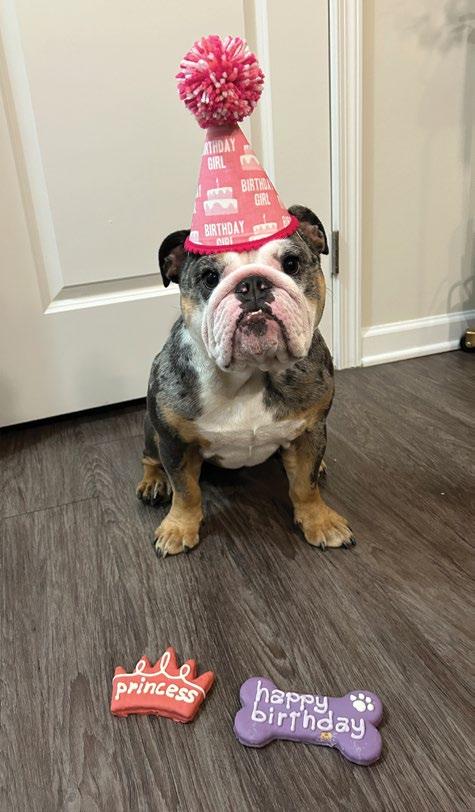
WHAT IS YOUR GREATEST EXTRAVAGANCE? Gifts for family members.
WHAT IS YOUR FAVORITE VACATION DESTINATION? Fripp Island, SC.
WHAT IS YOUR FAVORITE FOOD? Tacos.
WHO IS THE PERSON YOU ARE MOST INTERESTED IN MEETING?

Martin Luther King Jr. and Keke Palmer.
WHAT WAS THE LAST BOOK YOU READ?
The ABC Murders, Agatha Christie.
WHAT IS YOUR FAVORITE TV SHOW? Currently, Shrinking.
WHAT GOALS DO YOU STILL HAVE THAT YOU HAVE NOT ACHIEVED YET? To host Thanksgiving.
WHAT IS A LITTLE-KNOWN FACT ABOUT YOU? I am left handed.
WHAT IS YOUR FAVORITE WEBSITE? Amazon.

WHAT WOULD YOU BE IF YOU WERE NOT A LAWYER? Professional Organizer.

WHAT IS SOMETHING PEOPLE WOULD BE SURPRISED TO HEAR ABOUT YOU? My senior superlative was Class Clown.
WHAT IS YOUR FAVORITE THING ABOUT THE BAR ASSOCIATION? Connecting and building personal /professional relationships with my peers.
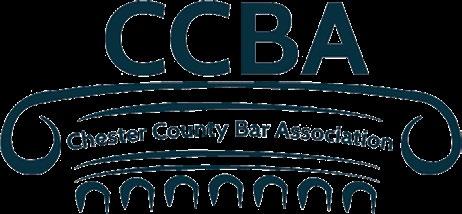




legal
MacElree Harvey’s Land Use attorneys help developers, builders, and property owners turn vision into value.
We guide clients through each phase of the development process, bringing clarity to complex regulations and momentum to every project. Rooted in the communities we serve, we offer trusted local insight that drives results.
We know this region because we live and work here. Let us help you build on it.

For Every Client. Every Day.
Practical solutions. Strategic guidance. Local insight.